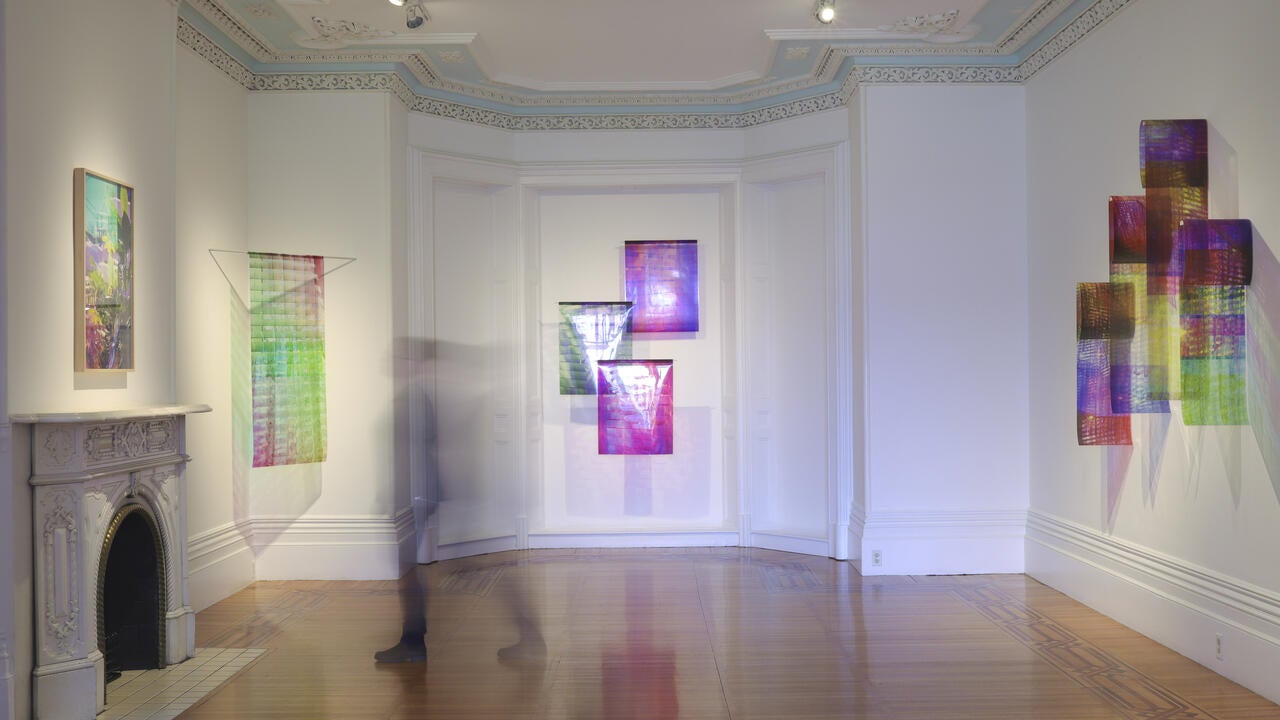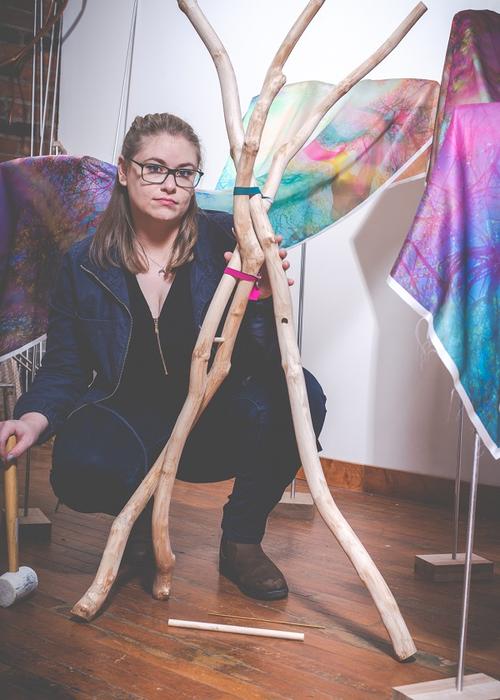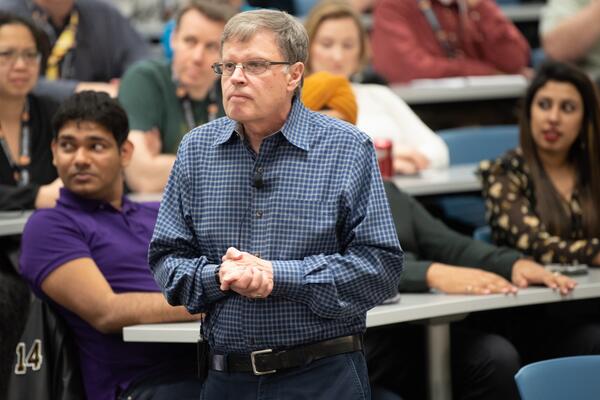
Perspectives, perceptions and picture making
Natalie Hunter (MFA ’13) explores ideas through the creative process.

Natalie Hunter (MFA ’13) explores ideas through the creative process.
By Natalie Hunter (MFA ’13) AlumnusI graduated from the University of Waterloo in 2013 with an MFA in Studio Art, and for the past seven years I’ve been teaching sessionally in the Fine Arts Department for various courses including Contemporary Art, Digital Imaging, and Digital Photography. Many of my students who take the introductory online Digital Imaging course come from a diverse range of educational faculties, and also social, cultural and economic backgrounds in life. I encourage my students to explore their own identities through their work, and their unique perspectives on life and lived experience. Many of my students take this course because they seek a creative outlet and look for a way to express their fears, vulnerabilities and original ideas in a visual way. It is my hope that my students bring their newly acquired skills with them as they continue to grow as individuals and think critically about the contemporary world we live in.

Photo credit: Eileen Reilly for the Creative Women of Hamilton Project.
In my own studio practice, my fascination for both the act of making with materials and my hands, and the making of images, leads me to probe how images, objects, materials and experiences can shape memory and perceptual understanding. Taking a multidisciplinary approach, my practice merges photography, sculpture, installation, video projection and drawing. Crossing boundaries between these media, my work explores themes of temporality, memory, consciousness and time. I am interested in how sensory experience shapes memory and how materials can transform space. These inquiries lead me to examine the boundaries between mental and physical spaces, time and memory, material and immaterial, light and space, motion and stasis, presence and absence.
My research and studio practice challenge how these immaterial concepts manifest in material ways while considering how the nature of memory can change, bend and stretch over time, space and place. For the past eight years, my work has existed somewhere between image and sculpture. Primarily using experimental photography, light, transparent film, sculpture and other fragile materials, I create images, objects and spatial installations that explore memory, the archive, time, the psychology of space, the self and consciousness. My resultant works often rest between installation, sculpture and photography while accentuating the importance of materiality in relation to the senses, memory formation and immediate lived experience.
I encourage my students to explore their own identities through their work, and their unique perspectives on life and lived experience.
I am lucky and grateful to have been awarded grants from the Ontario Arts Council and the Canada Council for the Arts in the past couple of years, which have helped fund new photography, sculpture and installation work. I am grateful for the experiences UW has given me both as a graduate student and as an educator as I continue to grow as an artist and academic.
Natalie Hunter (MFA '13) is a Canadian artist who grew up in Hamilton, Ontario. Her multidisciplinary practice is concerned with the transformation of materials, objects and images in ways that evoke an emotive or psychological response in the viewer.

Read more
For more than four decades, Waterloo professor Larry Smith has helped build the University's reputation for innovation and entrepreneurial excellence

Read more
From bubble tea to craft beer and delicious bites, Waterloo entrepreneurs are serving up success stories of passion, purpose and community, one food venture at a time

Read more
More than 20 founders from Waterloo highlight the newly unveiled list that celebrates those making the biggest impact inside Canadian tech and innovation
The University of Waterloo acknowledges that much of our work takes place on the traditional territory of the Neutral, Anishinaabeg, and Haudenosaunee peoples. Our main campus is situated on the Haldimand Tract, the land granted to the Six Nations that includes six miles on each side of the Grand River. Our active work toward reconciliation takes place across our campuses through research, learning, teaching, and community building, and is co-ordinated within the Office of Indigenous Relations.